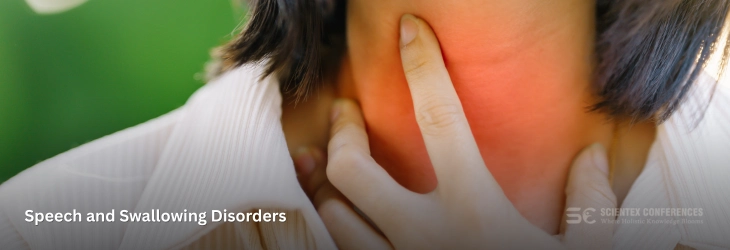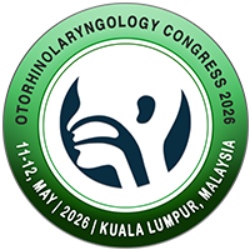Track: Speech and Swallowing Disorders

Session Overview:
Speech and swallowing disorders are conditions that affect an individual's ability to communicate effectively and/or swallow safely. Speech disorders may include difficulties with articulation, fluency, voice, or language comprehension and expression, while swallowing disorders (dysphagia) involve problems moving food or liquid from the mouth to the stomach. These disorders can result from neurological conditions such as stroke or Parkinson’s disease, structural abnormalities, injury, aging, or developmental disorders. Common symptoms include slurred speech, stuttering, hoarseness, coughing or choking during meals, and the sensation of food sticking in the throat.
Recent Developments:
Recent advancements in understanding and managing speech and swallowing disorders have been driven by innovations in technology, neuroscience, and personalized therapy approaches. High-resolution imaging techniques, such as videofluoroscopic swallow studies (VFSS) and fiberoptic endoscopic evaluation of swallowing (FEES), now offer more precise diagnostics. In speech therapy, artificial intelligence and machine learning are being used to develop speech recognition tools and virtual therapy platforms that provide real-time feedback and remote access to care. Brain-computer interface (BCI) technologies are also emerging to help restore communication in individuals with severe speech impairments. Additionally, neurostimulation techniques like transcranial magnetic stimulation (TMS) and neuromuscular electrical stimulation (NMES) are showing promise in enhancing both speech and swallowing functions.
Sub Tracks:
Aphasia:
Aphasia is a language disorder that affects a person’s ability to speak, understand, read, or write, usually caused by brain damage such as from a stroke. It does not affect intelligence but can significantly impact communication and daily life.
Dysarthria:
Dysarthria is a motor speech disorder resulting from weakened or poorly coordinated speech muscles due to neurological injury. Speech may sound slurred, slow, or robotic, depending on the severity and underlying cause.
Apraxia of Speech:
Apraxia of speech is a motor planning disorder where the brain struggles to coordinate the movements needed for speech, despite normal muscle strength. Individuals often know what they want to say but have difficulty producing the correct sounds consistently.
Stuttering:
Stuttering is a fluency disorder characterized by involuntary repetitions, prolongations, or blocks in speech. It often begins in childhood and can be influenced by stress, excitement, or pressure to speak.
Dysphagia:
Dysphagia refers to difficulty swallowing, which can occur at any stage of the swallowing process and may lead to choking, aspiration, or malnutrition. It is commonly associated with neurological conditions, structural abnormalities, or aging.
This session will bring together leading otolaryngologists, speech-language pathologists, neurologists, and rehabilitation specialists to share insights on speech and swallowing disorders. Attendees will gain exposure to the latest scientific discoveries, diagnostic tools, and therapeutic innovations transforming communication and swallowing care. By the end of this session, participants will have enhanced their understanding of evidence-based techniques, multidisciplinary management approaches, and strategies to improve clinical outcomes and quality of life for individuals affected by these disorders.
Scientific Highlights
- Anatomical and Physiological Disorders of ENT
- Lung Disease Airway Issues
- ENT Infections and allergies
- New treatment Advances in Otolaryngology
- Ear & Nose plastic surgery
- Endoscopic and laparoscopic ENT surgery
- Craniofacial & Facial surgery
- Otology and Neurotology
- ENT Microsurgery
- COVID 19 and ENT
- Pediatric Otolaryngology
- Speech and Swallowing Disorders
- Head and Neck Surgery
- Airway Management & Surgery
- ENT Allergies & Immunotherapy
- Surgical Techniques in ENT
- Nasal Polyposis and Biologic Therapy
- Advances in Cochlear Implants
- Recent Advances in Otorhinolaryngology
- Vertigo and Balance Disorders


